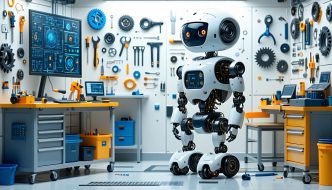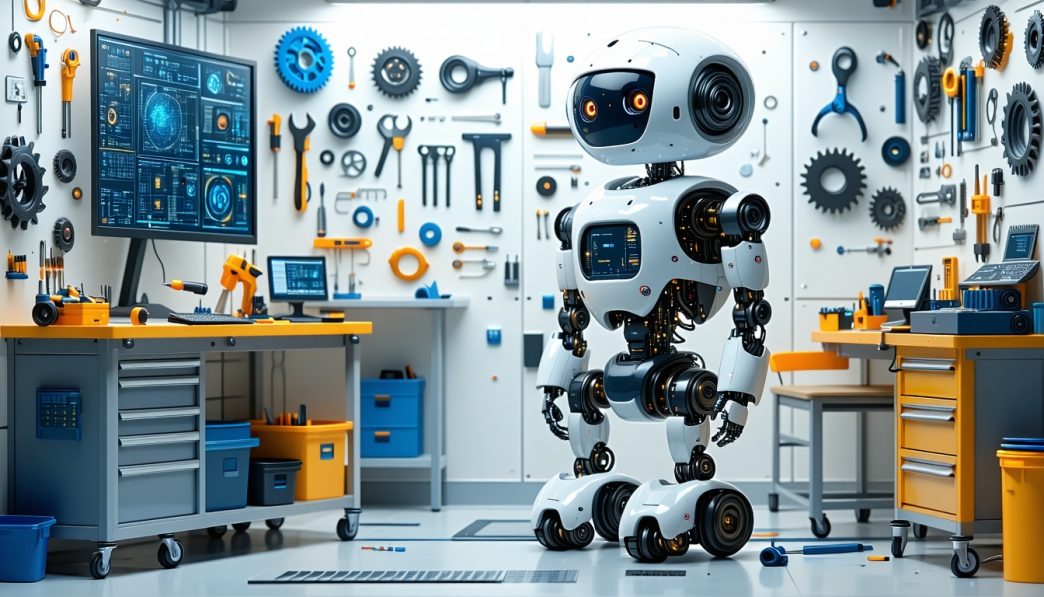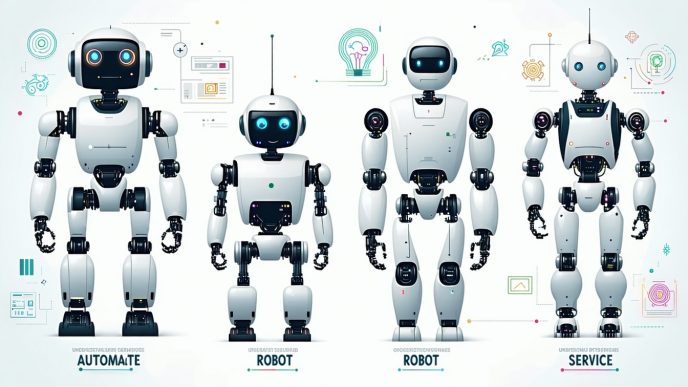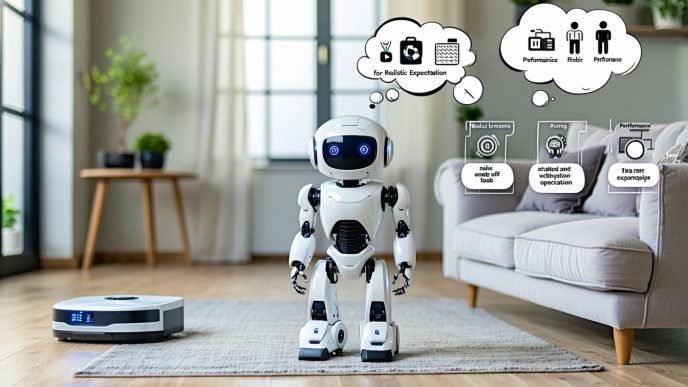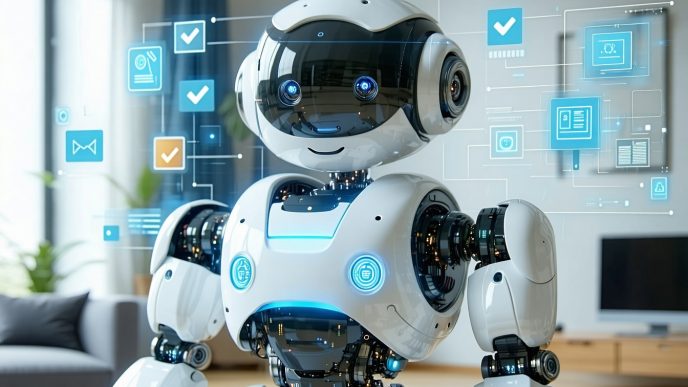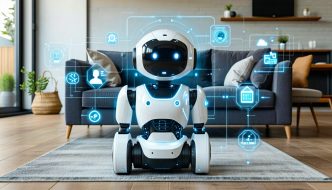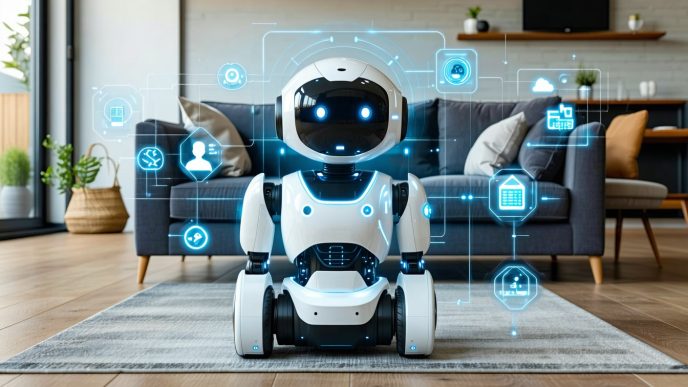Understanding Upkeep and Servicing Costs
When considering the purchase of a home robot, it is essential to look beyond the initial price and evaluate the long-term upkeep and servicing costs. Understanding these costs can aid potential buyers in making informed decisions.
Importance of Considering Maintenance Costs Before Buying
First-time robot buyers need to grasp the significance of maintenance costs before committing to a purchase. Maintenance expenses can accumulate over time, impacting the overall value of the investment. Buyers should consider the following:
| Cost Type | Description |
|---|---|
| Routine Maintenance | Regular upkeep tasks needed to ensure optimal performance. |
| Repairs | Costs incurred for fixing issues that arise during the robot’s lifespan. |
| Parts Replacement | Expenses related to replacing worn-out components. |
Being aware of potential upkeep expenses can help users budget effectively and reduce financial surprises. More detailed information on factors affecting these costs is available in our article on what to know before you buy a robot.
Factors Affecting Upkeep and Servicing Costs
Several elements can influence the maintenance and repair needs of a home robot:
-
Robot Type: Different types of robots, such as vacuum cleaners or lawn mowers, may have varying maintenance requirements. For example, a robotic vacuum might need more frequent cleaning of brushes and filters compared to a lawn care robot.
-
Usage Frequency: The more often a robot is used, the higher the likelihood of wear and tear. Regular use can lead to increased maintenance and repair needs.
-
Technology and Features: Advanced technology and features often result in higher maintenance costs. For instance, robots equipped with sophisticated sensors may need specialized repairs if issues arise.
-
Manufacturer Support: The availability of customer support, warranties, and easy access to replacement parts can significantly affect long-term servicing costs. Check out our article on robot warranty and customer support for insights.
-
Environmental Factors: Conditions such as dirt, moisture, and temperature can impact a robot’s performance and durability, leading to increased maintenance needs. For example, a robot used outdoors may require more frequent servicing than one used solely indoors.
By considering these factors, potential buyers can gauge the ongoing costs associated with ownership and make informed decisions about their investment in home robotics. Understanding robot maintenance and repair needs will ultimately lead to a more satisfying user experience.
Routine Maintenance Needs
When considering the maintenance and repair needs of home robots, understanding the routine tasks involved is crucial for potential buyers. Proper upkeep ensures optimal functioning and longevity of the device.
Common Maintenance Tasks for Home Robots
Home robots require a variety of cleaning and maintenance tasks to function at their best. Here are some common maintenance activities that owners will encounter:
| Maintenance Task | Description | Frequency |
|---|---|---|
| Cleaning Sensors | Remove dust and debris from sensors to enhance accuracy | Weekly |
| Emptying Dust Bins | Clear accumulated dirt and debris to maintain efficiency | After each use |
| Changing Filters | Replace filters to ensure optimal air quality | Monthly |
| Cleaning Brushes | Remove hair and debris from brushes to prevent tangling | Weekly |
| Updating Software | Install updates for enhanced features and security | As needed |
Keeping track of these tasks will help maintain the robot’s efficiency and performance. For new users, understanding the types of routine maintenance involved is essential. For additional guidance on what to consider before making a purchase, refer to our article on what to know before you buy a robot.
Frequency of Maintenance
The frequency of maintenance tasks can vary based on several factors, such as the robot’s usage, environmental conditions, and specific tasks it performs. Below is a general guideline on how often maintenance should be conducted:
| Task | Frequency Estimate |
|---|---|
| Sensor Cleaning | Once a week |
| Emptying Dust Bin | After each session |
| Filter Replacement | Every 1-3 months |
| Brush Cleaning | Once a week |
| Software Update | Every few months |
By keeping current on these tasks, owners can significantly reduce repair needs and enhance the overall efficiency of their home robots. Understanding these robot maintenance and repair needs will help users make informed decisions while considering the integration of robotic technology into their homes. For information on different types of robots and their capabilities, see our article on understanding robot types and capabilities.
Repair Needs and Costs
Understanding the potential repair needs associated with home robots is crucial for any first-time buyer. It’s important to be aware of common issues that may arise, as well as the associated costs of these repairs, to better prepare for future maintenance.
Common Repair Issues with Home Robots
Home robots can encounter a range of issues over time. Being aware of these can help in identifying problems early and addressing them promptly. Below are some of the typical repair issues that users may experience:
| Repair Issue | Description | Estimated Cost |
|---|---|---|
| Battery Replacement | Decreased battery life leading to reduced performance. | $50 – $150 |
| Sensor Malfunction | Sensors failing to detect obstacles accurately. | $25 – $75 |
| Motor Issues | Weak or non-functioning motors affecting movement. | $100 – $300 |
| Software Glitches | Problems with software, affecting performance. | $0 – $50 (if under warranty) |
| Physical Damage | Dents or breaks from accidents. | $30 – $200 |
Understanding these repair issues is important to factor into the overall ownership experience. Regular monitoring and maintenance can often prevent these problems from escalating.
Estimating Repair Costs
Repair costs can vary based on the specific brand, model, and severity of the issue. Here’s a breakdown of potential expense categories for robot maintenance and repair needs.
| Expense Category | Average Cost Range | Notes |
|---|---|---|
| Minor Repairs | $25 – $75 | Simple issues like sensor recalibration. |
| Moderate Repairs | $100 – $200 | Battery and motor replacement costs. |
| Major Repairs | $200 – $500 | Extensive repairs due to physical damage. |
| Software Updates | Free – $50 | May be covered under warranty for certain upgrades. |
For more details on what to consider when purchasing a robot, refer to our guide on what to know before you buy a robot. Being prepared for the financial aspects of robot maintenance can lead to a more satisfying ownership experience. Understanding these potential costs can help buyers make informed decisions and budget effectively for upkeep.
DIY vs. Professional Servicing
When it comes to maintaining home robots, buyers often weigh the options between do-it-yourself (DIY) maintenance and seeking professional servicing. Both paths have their own advantages and drawbacks that can impact the longevity and functionality of these devices.
Pros and Cons of DIY Maintenance
DIY maintenance allows owners to take control of their robot’s upkeep. It can be more affordable and flexible. However, it also comes with potential downsides.
| Advantages of DIY Maintenance | Disadvantages of DIY Maintenance |
|---|---|
| Cost savings on labor fees | Risk of improper repairs leading to further issues |
| Flexibility to perform maintenance on schedule | Lack of expertise may result in mistakes |
| Hands-on learning experience about the device | May require purchasing tools or replacement parts |
Many routine tasks such as cleaning brushes, changing filters, or updating software can be performed easily by the owner. It is essential to understand the robot maintenance and repair needs to ensure proper care.
Benefits of Professional Servicing
On the other hand, professional servicing can provide expertise and assurance that maintenance is performed correctly. This approach is typically recommended for more complex repairs or when users are unfamiliar with the robot’s systems.
| Advantages of Professional Servicing | Disadvantages of Professional Servicing |
|---|---|
| Expertise from trained technicians | Higher costs for labor and potential parts replacement |
| Assurance of warranty protection | Less control over timing of repairs |
| Access to specialized tools and equipment | Dependence on availability of service centers |
Choosing professional servicing can be invaluable, especially for first-time robot buyers who may lack experience in maintenance. Understanding the robot maintenance and repair needs is crucial for making informed decisions.
For more on what to consider before purchasing, see our guide on what to know before you buy a robot.
Budgeting for Upkeep and Servicing
When considering the purchase of a home robot, it is essential to factor in the costs associated with upkeep and servicing. Proper budgeting ensures that potential owners can maintain their investment without unexpected financial strain.
Setting Aside Funds for Maintenance
Setting aside a dedicated budget for routine maintenance is crucial for first-time robot buyers. Maintenance costs typically include filter replacements, battery maintenance, software updates, and any necessary cleaning tools. Regular upkeep will prolong the life of the robot and enhance its performance.
| Maintenance Item | Estimated Annual Cost |
|---|---|
| Filter Replacement | $25 – $50 |
| Battery Replacement | $50 – $100 |
| Cleaning Supplies | $20 – $40 |
| Software Upgrades | $0 – $30 |
It is recommended that buyers set aside approximately 10-15% of the robot’s purchase price each year for these maintenance costs. For instance, if a robot costs $600, setting aside $60 to $90 annually for upkeep is advisable.
Planning for Unexpected Repairs
Unexpected repairs can happen to any home device, including robots. Being prepared for these costs is vital to avoid financial burdens when repairs arise. Common repair needs may include sensor replacements, motor issues, or software malfunctions.
When budgeting for unexpected repairs, consider the following points:
- Emergency Fund: Allocate a separate fund for unexpected repairs, aiming for 5-10% of the initial purchase price annually.
- Warranty Coverage: Check the warranty to understand what repairs are covered and for how long. This can relieve some financial pressure.
- Estimate Repair Costs: Repair costs can vary, but an estimated range can help in planning:
| Common Repair Item | Estimated Repair Cost |
|---|---|
| Sensor Replacement | $75 – $150 |
| Motor Repair | $100 – $300 |
| Software Reinstallation | $50 – $100 |
By preparing for both routine maintenance and unexpected repairs, owners can better manage their finances, ensuring the longevity and efficiency of their home robots. For a detailed overview of what to consider before making a purchase, explore our article on what to know before you buy a robot.
Maximizing the Lifespan of Your Home Robot
Ensuring that a home robot remains functional for as long as possible involves understanding proper care and maintenance. By taking proactive steps, one can minimize potential issues, ultimately affecting robot maintenance and repair needs.
Tips for Extending the Lifespan
- Regular Cleaning: Keeping the robot clean is essential. Dust and debris can affect the robot’s sensors and functioning. A consistent cleaning routine should include:
- Wiping down surfaces
- Emptying dust compartments
- Cleaning brushes and wheels
| Task | Frequency |
|---|---|
| Dust container emptying | After every use |
| Sensor cleaning | Weekly |
| Brush cleaning | Monthly |
- Battery Management: Battery health is critical. Following recommended practices helps prolong battery life:
- Avoid fully draining the battery before recharging.
- Use the robot regularly to maintain battery performance.
- Follow guidelines for charging, as outlined in robot battery life and charging considerations.
-
Software Updates: Keeping the robot’s software up to date ensures it operates optimally with the latest features and fixes. Regularly check for updates and install them as needed. Refer to robot software updates and upgrades for detailed information.
-
Usage Practices: Understanding the robot’s limitations and following recommended usage practices can prevent wear and tear. This can involve certain tasks or environments where robot performance is most efficient. Understanding robot types and capabilities can provide helpful insights.
Proper Care and Maintenance Practices
-
Routine Inspections: Periodically check for any signs of wear or malfunction. Addressing minor issues can prevent more significant repair needs down the line.
-
Storage: Store the robot in a dry and safe environment when not in use. This protects it from environmental factors that could cause damage, including humidity and extreme temperatures.
-
Adhering to Manufacturer Guidelines: Follow the manufacturer’s instructions for care and maintenance. This includes adhering to rules regarding cleaning, parts replacement, and any other specific requirements outlined in the robot warranty and customer support.
-
Safe Operation: Ensure that the robot operates in suitable conditions that match its safety and compatibility requirements. For insights into safety measures, see robot safety and home compatibility.
By incorporating these practices, individuals can significantly enhance the durability of their home robots, reducing the likelihood of frequent issues and minimizing the impact on robot maintenance and repair needs.

